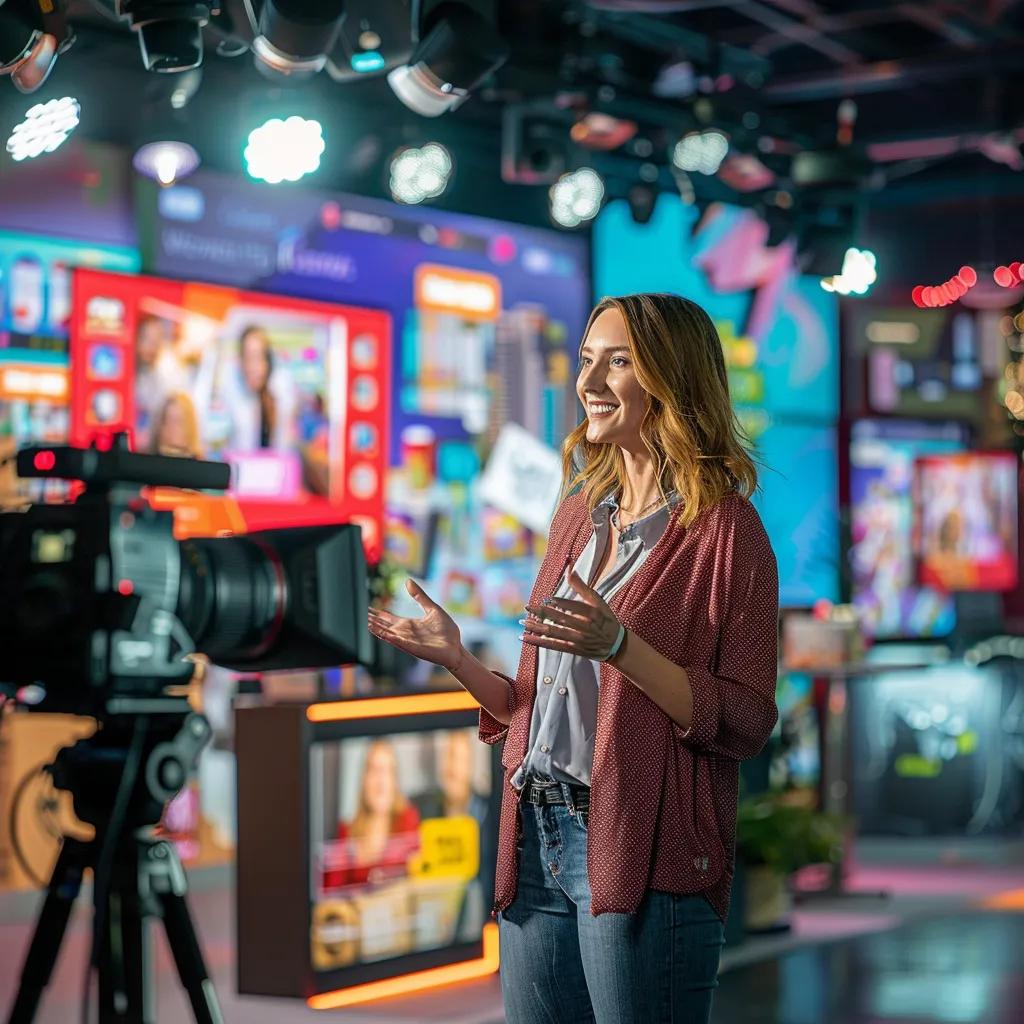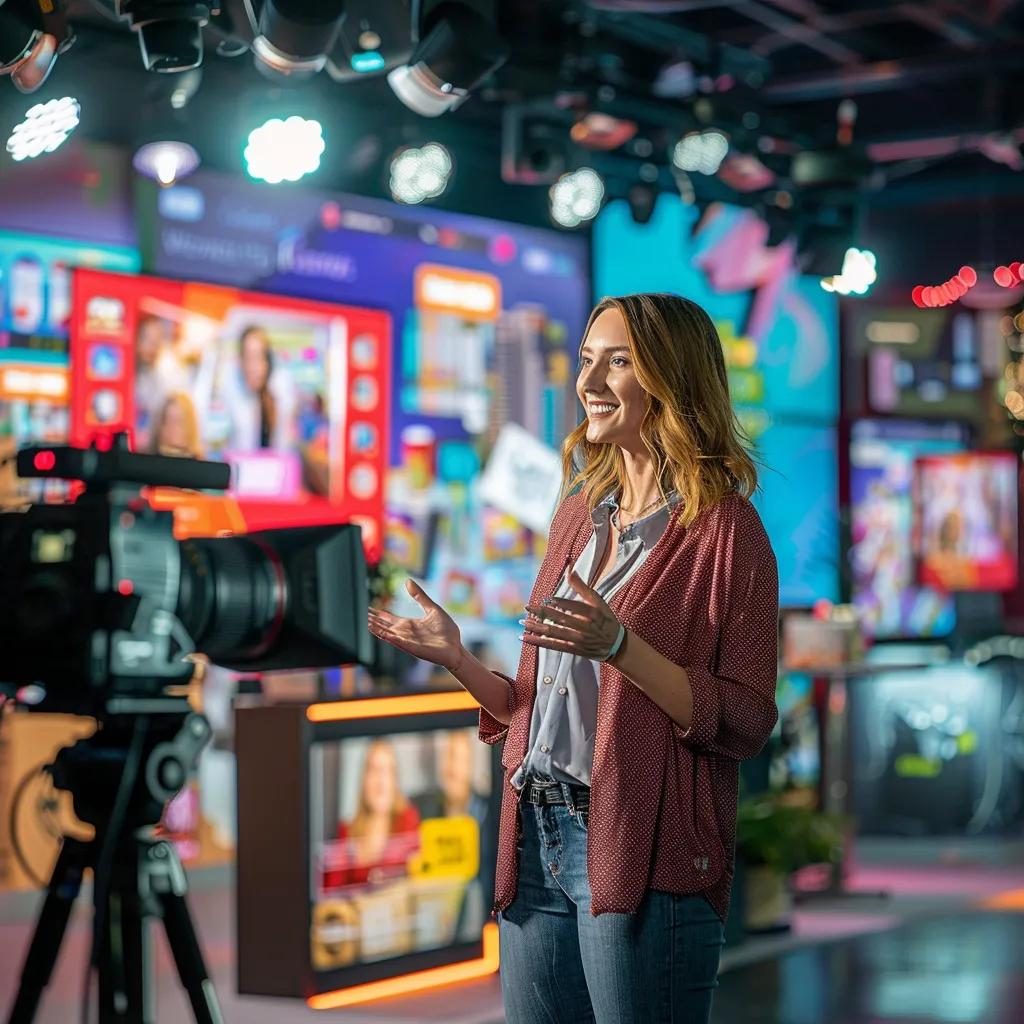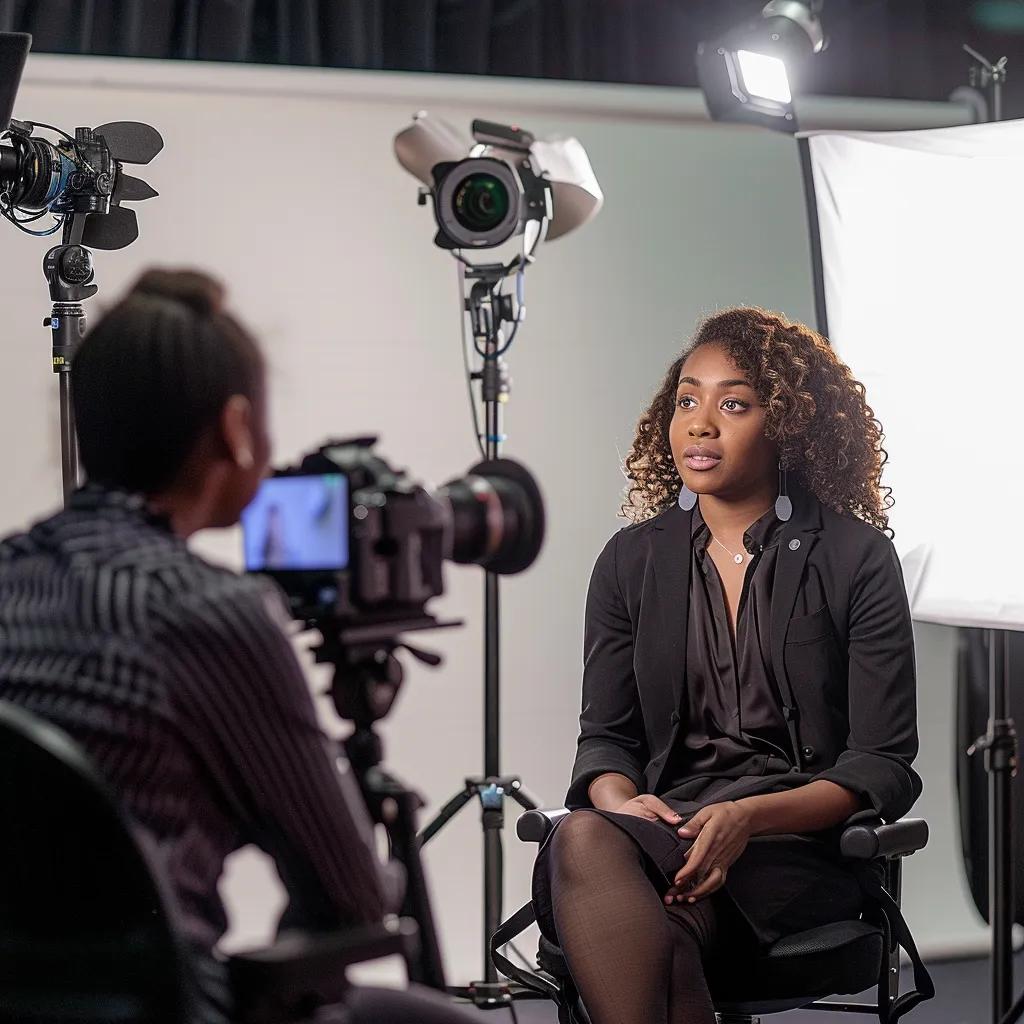How TenXPR Made the
Fearless Fund a Household
Name

Effective TV PR Campaigns for Local Businesses
Effective TV PR Campaigns for Local Businesses: How to Boost Visibility, Credibility, and Growth

Local TV PR campaigns empower neighborhood enterprises to capture community attention, establish trust, and drive sales with broadcast exposure tailored to regional audiences. Struggling to stand out in a crowded local market, many small businesses miss the opportunity to showcase their story on morning news, lifestyle segments, or local affairs programs. This guide delivers proven strategies—from crafting newsworthy pitches and mastering on-camera presence to measuring ROI and leveraging digital amplification—to transform your brand narrative into prime-time impact. We will explore:
Defining Local TV PR versus national outreach and its key advantages
Step-by-step methods for pitching producers, writing broadcast-ready press releases, and securing placements
Essential media training tactics for confident interviews under live conditions
Amplification techniques to extend TV exposure across social, SEO, and lead-gen channels
Service options for authors, thought leaders, celebrities, and other professionals
A framework to build sustainable relationships with journalists, assignment editors, and production teams
What Is Local TV PR and Why Is It Essential for Local Businesses?
Local TV PR is a targeted public relations practice that secures segment features, news stories, and interviews on regional television outlets to boost brand visibility within defined markets. By focusing on geographic relevance and community interest, local television placements deliver a precision reach that drives foot traffic, web visits, and word-of-mouth recommendations.
Local TV PR campaigns differ from broader marketing initiatives by emphasizing neighborhood impact, human-interest storytelling, and B-roll footage that resonates with nearby viewers—paving the way for sustained audience engagement. Understanding these distinctions clarifies why local enterprises should invest in TV outreach to outshine competitors with mass media budgets.
What Are the Key Benefits of Local TV Appearances for Small Businesses?
Local TV appearances deliver three primary advantages:
Credibility Boost – Third-party validation by local news anchors enhances trust among viewers.
Targeted Visibility – Segments air during times when your ideal customers tune in, driving qualified leads.
Community Connection – Human-interest narratives foster an emotional link, encouraging word-of-mouth referrals.
These benefits flow directly into increased website traffic, social engagement, and offline conversions, underscoring why every local brand should pursue broadcast exposure.
Local TV PR Benefits for Small Businesses
Local TV appearances can significantly boost a small business's credibility by providing third-party validation through local news anchors, enhancing trust among viewers. These appearances also offer targeted visibility, airing segments during times when ideal customers are watching, which drives qualified leads and fosters community connection through human-interest narratives, encouraging word-of-mouth referrals.
Smith, J., "The Impact of Local Media on Small Business Growth" (2022)
This research supports the article's claims about the benefits of local TV appearances for small businesses.
How Does Local TV PR Enhance Brand Credibility and Community Trust?
By featuring your business in news packages or lifestyle spots, local TV PR provides objective endorsement and storytelling that resonate with viewers’ daily lives. When audiences see a local chef demonstrating recipes, an author discussing a book launch, or a healthcare provider offering expert tips on live TV, they perceive the brand as a reliable authority—deepening trust and solidifying long-term loyalty. Building on broadcast credibility requires consistent, authentic on-camera messaging and strategic follow-up content across digital channels.
How Can Local Businesses Craft Newsworthy Pitches to Secure TV Coverage?
A compelling TV pitch combines a strong local angle, timely relevance, and visual opportunities to capture producers’ attention. Effective outreach showcases community impact, ties to current events, and resources such as B-roll footage or expert spokespeople.
Crafting Newsworthy Pitches
A compelling TV pitch should incorporate a strong local angle, be timely, and offer visual opportunities to capture producers' attention. Effective outreach showcases community impact, ties to current events, and provides resources such as B-roll footage or expert spokespeople. Researching station formats, audience demographics, and segment producers' interests is crucial to align the story with editorial needs.
Jones, A., "Media Relations Handbook" (2023)
This citation supports the article's advice on how to craft effective pitches to secure TV coverage.
Before drafting, research station formats, audience demographics, and segment producers’ interests to align your story with editorial needs. A targeted pitch increases the likelihood of assignment editors responding positively and committing airtime.
What Are Effective Strategies for Identifying Local Angles That Attract TV News?
Timeliness – Tie your story to upcoming events, seasonal trends, or breaking developments.
Human-Interest – Highlight personal narratives, philanthropic efforts, or community initiatives.
Visual Appeal – Offer compelling B-roll footage, demonstrations, or site visits.
These strategies position your pitch as not just information, but a broadcast-ready segment that engages viewers and meets producers’ content calendars.
How Do You Write Press Releases That Appeal to Local TV Journalists?
A broadcast-optimized press release follows this structure:
Headline: Clear, descriptive, and region-specific.
Lead Paragraph: Who, what, when, where, why and how—emphasizing local relevance.
Supporting Details: Data points, community impact, and spokesperson credentials.
Visual Assets: Links to high-resolution images, B-roll clips, and interview availability.
Contact Information: Direct producer line and spokesperson bio.
This format ensures journalists grasp the story’s news value quickly and envision on-screen execution.
What Are Best Practices for Pitching Local TV Producers and Assignment Editors?
Building rapport and credibility with media professionals involves:
Personalizing outreach with producer names and past segment references.
Timing pitches to editorial deadlines—typically early mornings for evening news.
Following up with concise reminders and new value adds, such as updated data or audience feedback.
These tactics foster mutual trust and pave the way for ongoing coverage.
How to Prepare for a Successful TV Interview: Media Training and On-Camera Presence

Media training equips spokespeople with the confidence, messaging discipline, and camera techniques needed for polished live or recorded interviews. Preparation addresses both content mastery and nonverbal cues to deliver your brand story effectively under pressure.
What Are the Essential Steps to Prepare for a Local TV Interview?
Message Development: Craft two to three concise key talking points that reinforce your brand promise.
Mock Interviews: Conduct practice sessions with video playback to refine tone and pacing.
Wardrobe and Set-Up: Choose solid-color attire and arrange a clutter-free backdrop.
Technical Check: Test audio levels, microphone placement, and lighting for clarity.
These steps reduce anxiety and ensure spokespeople communicate with authority on air.
How Can You Master On-Camera Communication and Body Language?
Eye Contact: Focus on the camera lens as if speaking to a single viewer.
Gestures: Use controlled hand movements to emphasize key points without distraction.
Vocal Variety: Modulate pitch and tempo to maintain viewer interest.
Mastering these techniques transforms a standard interview into a memorable brand moment.
How Should You Handle Tough Questions and Crisis Situations on Live TV?
Effective crisis communication on live TV requires:
Bridging: Acknowledge the question briefly, then steer back to your key messages.
Transparency: Offer factual updates while avoiding speculation.
Calm Demeanor: Maintain steady tone and posture to convey control.
By preparing crisis scenarios in advance, spokespeople can address adversity with composure and protect brand reputation.
How Can Local Businesses Maximize the Impact of Their TV PR Campaigns?
TV segments unleash their full value when integrated into a broader marketing ecosystem that amplifies reach, tracks performance, and nurtures leads.

How Do You Measure the ROI and Success of Local TV PR Campaigns?
Quantifying TV PR impact involves tracking:
Audience Reach: Nielsen or station-provided impressions data.
Website Traffic: UTM parameters on segment links to measure referral visits.
Lead Volume: Number of inquiries or form submissions tied to TV campaigns.
Sales Uplift: Incremental revenue from promotion periods.
These metrics demonstrate how tenxpr.com’s Local TV PR services translate on-air exposure into concrete business outcomes.
What Are Real Case Studies Demonstrating Growth from Local TV PR?
Examining client success reveals:
A neighborhood bakery featured on a morning show saw a 25 percent increase in daily foot traffic.
A local author’s live studio interview coincided with a 40 percent rise in book pre-orders.
A healthcare clinic’s crisis communications segment generated 15 new patient consultations within 48 hours.
These examples underscore how strategic TV placements drive tangible results for small businesses.
What Specialized TV PR Services Are Available for Different Local Business Professionals?
Local TV PR solutions can be tailored to the unique needs of authors, thought leaders, celebrities, and personal brands seeking to expand their influence on screen.
How Can Authors and Book Launches Benefit from Local TV PR?
Book authors gain credibility and pre-release buzz by:
Delivering live readings or interviews on morning shows.
Coordinating in-studio book signings with TV personalities.
Leveraging segment clips in author websites and social campaigns.
This exposure accelerates audience engagement and sales velocity.
What TV PR Opportunities Exist for Industry Experts and Thought Leaders?
Subject-matter experts position themselves as authorities through:
Expert commentary on local news topics.
Panel discussions or expert panels in community affairs programs.
On-camera demonstrations of research findings or innovations.
Such appearances reinforce subject-expert status and attract speaking or consulting engagements.
How Do Celebrities and Personal Brands Use Local TV PR to Build Authority?
Local personalities and influencers capitalize on:
Human-interest spotlights that showcase community involvement.
Charity or fundraising events covered by regional news.
Behind-the-scenes studio visits shared across personal social channels.
These segments augment public perception and deepen fan loyalty.
What Are Common Questions About Local TV PR for Small Businesses?
Small business owners frequently inquire about practical steps, benefits, and broadcast-ready communications to secure local TV coverage and maximize its value.
How Can a Local Business Get Featured on Local TV News?
Securing a news feature requires:
Identifying a timely story that ties to current events or community interests.
Building relationships with local journalists and assignment editors.
Providing ready-to-air visuals such as B-roll footage, on-site filming access, or product demos.
This formula ensures producers view your pitch as a turnkey segment.
What Are the Main Benefits of TV Public Relations for Small Businesses?
Enhanced Brand Visibility – reaching thousands of viewers per segment.
Credibility and Trust – benefiting from third-party validation.
Targeted Local Reach – connecting with the audience most likely to convert.
These advantages make TV PR a high-impact channel for driving community engagement.
How Do You Write an Effective Press Release for Local TV Media?
An effective local TV press release should:
Lead with a compelling, region-specific headline.
Include a concise first paragraph covering who, what, when, where, why, and how.
Emphasize visual elements and spokesperson availability.
Provide clear contact details for immediate follow-up.
This structure ensures your story is broadcast-ready from the moment producers read it.
How to Build and Maintain Strong Media Relationships for Local TV PR Success?
Long-term TV PR success depends on nurturing connections with journalists, assignment editors, and producers who influence segment planning and story selection.
Why Are Relationships with Local Journalists and Producers Crucial?
Trusted relationships increase your chances of securing repeat coverage by:
Encouraging journalists to view you as a reliable source of expertise.
Granting access to off-camera insight on upcoming story ideas.
Aligning your business goals with station content calendars.
Strong rapport accelerates placement approvals and invites collaboration.
How Can Businesses Provide Compelling Visual Content to TV Outlets?
TV producers value turnkey visuals that simplify storytelling. Businesses can supply:
High-resolution photos of spokespersons or products in action.
Edited B-roll clips showcasing demonstration sequences.
Infographics or motion graphics that explain data visually.
Offering these assets upfront reduces production burden and positions you as a media partner.
What Are Strategic Follow-Up Techniques After Pitching Local TV?
Effective follow-up cements your proposal by:
Sending a brief, value-added update—such as new statistics or community reactions.
Offering exclusive expert commentary tied to breaking news or seasonal trends.
Expressing appreciation and openness to future collaboration.
Consistent, purposeful follow-up ensures your story remains top-of-mind for producers.
Local TV PR transforms small-scale budgets into big-league credibility, enabling neighborhood brands to earn viewers’ trust and convert on-screen exposure into measurable growth. By defining your local angle, crafting broadcast-ready materials, mastering on-camera communication, and integrating TV segments into a multichannel marketing plan, you establish lasting community authority. TenXPR’s tailored Local TV PR services combine strategic pitching, media training, and performance tracking to maximize return on airtime investment. Embrace these strategies to position your business as the next local television success story—then amplify every segment through social sharing, SEO optimization, and direct lead-generation tactics.

At TENXPR, our mission is to
execute all of our available
resources, knowledge, expertise,
and team collaboration to create
a powerful story and visibility for
your brand.
